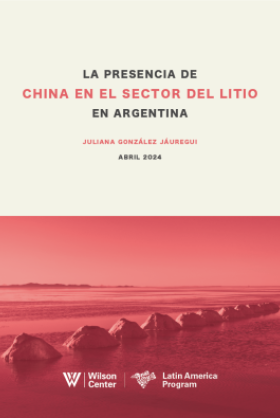China WET featured on China Water Risk
China Water Risk gives three key highlights from the August 5 China WET roundtable in Beijing.
On the 5 August 2013, the Woodrow Wilson Center’s China Environment Forum (CEF) and the Chinese environmental NGO Greenovation Hub came together to organize a diverse group of U.S. and Chinese experts in Beijing to participate in roundtable discussions on the Water-Energy Nexus. China Water Risk’s Ying Shen, gives us her three key highlights from the event.
1. Energy people and water people need to talk more to ensure policies are linked
There were generally two groups of people participating in the roundtables: the energy people and the water people. Most of them have never met, let alone talked with each other. The water-energy nexus has been getting increasing levels of coverage from researchers and the media (for a quick 101 on the water-energy nexus click here and here). Yet from the roundtable discussions, it was clear that further thinking and action are required to bring water policies into the energy policy decision making process, as well as investment in relevant projects; and vice versa.
Sun Qingwei, Deputy Secretary-General of China New Energy Chamber of Commerce said that most of the ministers he talked with about the water-energy nexus were surprised to hear about the subject and were not very aware of the risk that lie in the competing demands that result from the water-energy nexus. But the fact that these discussions are happening is a start.
It was interesting to note that Jennifer Turner from Wilson Center said that even in the US, people working in the water and energy sector need more talk and cooperation.
2. Renewable energy, a solution to the water-energy nexus? Maybe, but the mix is important
There appears to be a consensus that the most acceptable solution to water-energy conflicts, is to increase development of the renewable energy sector, since they use less water and emit less GHG’s.
China has an ambitious target for renewable energy. According to the 12th Five-Year Plan of China’s by 2015, annual usage of renewable energy will reach 0.478 billion tons of standard coal and the electricity generated from renewable energies will be kept above 20% of the total electricity generation.
So could renewable energy be the way out of water-reliant power for water constrained China?
It depends on the type of renewable energy. Take hydropower for example. There are significant environmental, social and governance issues concerning hydropower and it could sometimes be considered a ‘double-edged sword’. Also hydropower is vulnerable to climate change with dams being below full capacity due to floods and droughts.
For wind and solar (non-CSP) power, although not reliant on water to generate on a daily basis, more investment is needed to build connections to the national grid. Also it is necessary balance the grid with new non-renewable power due to intermittent nature of renewable energy.
Finally, the right type of bio-source energy matters. The second generation of bio-source energy, e.g. algae, will consume much less water during its life time when compare with the first generation. So it is not just a matter of choice between coal, gas or renewable energy, even within renewables, China needs to choose carefully.
3. Rapid urbanisation: green buildings and water pricing key
China is going through a period of rapid urbanization, so now is the right time to emphasize water-energy nexus in urban areas. Vatsal Bhatt from Brookhaven National Laboratory shared his experience from New York to suggest that green buildings have the potential to save both energy and water.
China has a huge potential in this area considering that 46 billion m2 of existing buildings and 2 billion m2 of new buildings are built annually in urban areas. It is expected that the Ministry of Housing and Urban-Rural Development will launch compulsory standards for green buildings this October.
In addition, the State Council announced this month a series of measures and financial incentives (including subsidies and tax incentives) to encourage the growth of the energy conservation and environmental protection industries (more on this here). These seem to be good indicators that ‘green buildings’ and ‘green design’ will be the trend in China. It is worth remembering that with power generation being the number one industrial user of water, any energy savings also mean water savings.
Besides policies and new technologies to tackle competing water-energy demands, good consumer behavior can help a lot from the demand management side. But it is not easy to change people’s life style. In order to encourage more frugal behavior and reduce the wastage of unnecessary water and energy, a reasonable pricing system needs to be in place. (more on price reform here)
Compared to the States and the EU, water prices in China do not reflect their water scarcity problems. Daily water consumption per capita in big cities in China can be higher than 150 liters this has considerable room to shrink. More reasonable water prices could guild people towards reasonable usage of water, and at the same time save energy, e.g. less hot water used for a shower also saves electricity to heat the water. Don’t take our word on this, see Sino French Water’s views on water pricing here.
Related Program

China Environment Forum
Since 1997, the China Environment Forum's mission has been to forge US-China cooperation on energy, environment, and sustainable development challenges. We play a unique nonpartisan role in creating multi-stakeholder dialogues around these issues. Read more










